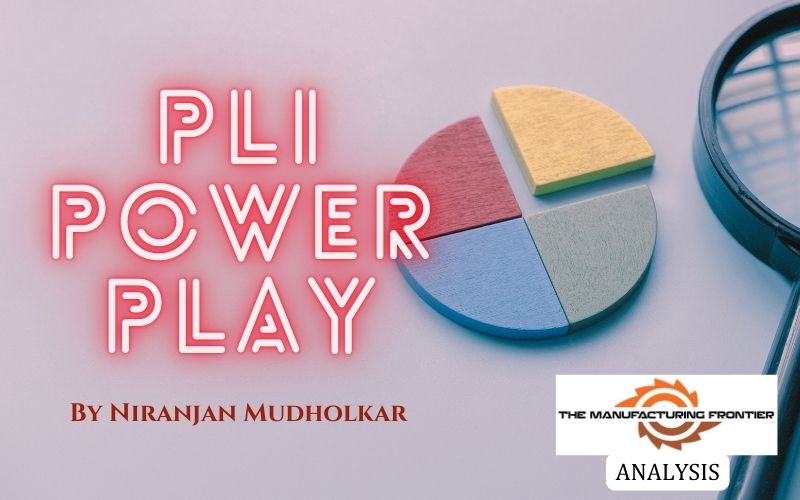“The PLI Scheme, along with other strategic initiatives, is not just a policy reform; this initiative is playing the role of a catalyst, transforming India’s industrial sector and forging a new era of economic prosperity and global leadership.”
India’s manufacturing sector is no more a sleeping giant; it’s a dynamic force undergoing an intense transformation. And this renaissance is driven by a bouquet of visionary policies; chief among them the Production Linked Incentive (PLI) Scheme. Indeed, the PLI Scheme is a strategic lever propelling the nation towards its ambition of becoming a global manufacturing powerhouse.

A resolute push to accelerate growth
The recent budget allocations for 2025-26 serve as a resounding testament to the government’s unwavering commitment to the sector as well as overall growth. The substantial hikes witnessed across key sectors – a dramatic surge in Electronics and IT Hardware, a monumental leap in Automobiles and Auto Components, and a significant boost to Textiles – are not mere fiscal adjustments. They are deliberate investments in India’s future, signaling a resolute push to accelerate industrial growth and cement our place on the global stage.
Launched in 2020, the PLI Scheme is more than just a financial incentive; it’s a strategic leap towards “Atmanirbhar Bharat”, a self-reliant India. By linking financial rewards to tangible outcomes – increased production, incremental sales and job creation – the scheme fosters a performance-driven ecosystem that attracts both domestic and international investments. This approach compels businesses to embrace innovation, adopt cutting-edge technologies, and achieve economies of scale, laying the foundation for sustainable growth.

The numbers speak volumes
With a massive outlay of ₹1.97 lakh crore, the PLI Scheme targets 14 critical sectors, each chosen to enhance India’s manufacturing prowess and elevate its position in the global market. The results are undeniable: ₹1.46 lakh crore in realized investments, a projected crossing of ₹2 lakh crore within the next year, ₹12.50 lakh crore in boosted production and sales, and the creation of 9.5 lakh jobs, with expectations of reaching 12 lakhs. Exports have also surged past ₹4 lakh crore, driven by the stellar performance of sectors like electronics, pharmaceuticals, and food processing.
Inspiring success stories
The success stories emerging from specific sectors are equally compelling. India’s electronics manufacturing sector, once a net importer, has transformed into a net exporter of mobile phones. Domestic production has risen from 5.8 crore units in 2014-15 to 33 crore units in 2023-24, with imports going down significantly. Exports touched five crore units, and Foreign Direct Investment rose by a whopping 254%, highlighting the scheme’s role in boosting manufacturing and investment. The pharmaceutical industry has solidified its position as the third-largest globally by volume. Exports now account for 50% of production, and the country has reduced reliance on imports by manufacturing key bulk drugs like Penicillin G. With an outlay of US$ 3.5 billion (₹20,750 crore), the automotive PLI scheme has driven significant investments and boosted production of high-tech automotive products. Over 115 companies applied, with 85 approved for incentives, attracting US$ 8.15 billion (₹67,690 crore) in investments, far exceeding the target. This success has strengthened India’s position in the global automotive sector. The PLI scheme for solar PV modules has expedited the country’s renewable energy goals and has helped us achieve 60% import substitution in telecom products. Well, even the nascent drone industry is witnessing a phenomenal surge, driven by MSMEs and startups.

Complementary FDI Policy
Complementing the PLI Scheme is the government’s liberalized Foreign Direct Investment (FDI) policy, which allows 100% FDI in most sectors under the automatic route. Significant FDI reforms between 2019 and 2024 have further streamlined the process while attracting global investors and boosting domestic production. The resulting 69% increase in FDI equity inflow in the manufacturing sector is a testament to the effectiveness of these measures.
This comprehensive approach – a blend of strategic incentives, targeted investments, and liberalized policies – is reshaping India’s manufacturing landscape. It’s fostering a resilient and technologically advanced ecosystem, reducing import dependence, and propelling India towards sustained economic growth and leadership in global supply chains.

A new horizon beckons
The journey is far from over. Challenges remain, including the need for continuous skill development, infrastructure improvements, and streamlining of regulatory processes. However, the momentum is undeniable. India is not merely participating in the global manufacturing race; it’s setting the pace. The PLI Scheme, along with other strategic initiatives, are not just policy reforms; these initiatives are playing the role of a catalyst, transforming India’s industrial sector and forging a new era of economic prosperity and global leadership. The dream of “Make in India” is becoming a tangible reality, and, of course, the world is taking notice.
Statistics Source: PIB
References:
https://www.indiabudget.gov.in/doc/eb/vol1.pdf
https://pib.gov.in/PressReleasePage.aspx?PRID=2060117

